Golden Age Project PRE-73 JR Handleiding
Golden Age Project
Receiver
PRE-73 JR
Bekijk gratis de handleiding van Golden Age Project PRE-73 JR (2 pagina’s), behorend tot de categorie Receiver. Deze gids werd als nuttig beoordeeld door 4 mensen en kreeg gemiddeld 4.7 sterren uit 2.5 reviews. Heb je een vraag over Golden Age Project PRE-73 JR of wil je andere gebruikers van dit product iets vragen? Stel een vraag
Pagina 1/2

W W W . G O L D E N A G E P R O J E C T . C O M I
PRE-73 Jr
INTRODUCTION
Congratulations on choosing the Golden Age Project PRE-73 Jr microphone preamplifier!
The PRE-73 Jr is a one-channel vintage style microphone- and instrument preamplifier. The signal path uses
only discrete components like resistors, capacitors and transistors. The in- and output is transformer bal-
anced, using two different transformers, each one optimized for its purpose. This is the way audio compo-
nents were built before integrated circuits became available.
Integrated circuits are small and cheap and widely used in most modern designs. It is clear though that audio
components built with modern technology doesn´t always provide the best perceived sound quality or the type
of character that the modern user desires.
On the contrary, the subjective sound quality delivered by vintage equipment is often prefered over the one
delivered by modern units, a situation that is even more obvious now when music is recorded with clean-
sounding digital audio equipment.
This is the reason why so many vintage audio components are cloned and produced again and also why the
vintage originals are often very expensive on the second hand market.
The circuit used in the PRE-73 Jr is similar to the preamp section in the classical 1073 module with a corre-
sponding sound character that is warm, punchy, sweet and musical. These classic characteristics have been
heard on countless recordings through the years and it is a versatile sound that works very well on most
sound sources and in most genres.
The essence of this sound is now available at a surprisingly low cost, making it available to nearly everyone.
FEATURES
- Vintage Style class-A electronics. No integrated circuits in the signal path.
- GAIN switch range 20 - 70 dB.
- Switchable phantom power and absolute phase.
- A high-impedance instrument input for any sound module, electric guitar or bass.
- A simple signal LED indicator.
- The output level control makes it possible to do fine gain adjustments and also to overload the main gain stage for more character and then
lower the signal to a suitable level before the output stage.
- Combo XLR/TRS input jack and separate output XLR and TRS jacks for flexible connections.
- Insert jack for inserting EQ´s and other units.
- The circuit board is prepared for the Carnhill input transformer.
- External power supply to avoid interaction with the audio circuits and transformers.
- The small format makes it possible to mount 4 units in our 19-inch rack kit, the UNITE MKII.
- A solid build quality that will last many years of normal use.

W W W . G O L D E N A G E P R O J E C T . C O M II
CIRCUIT DESCRIPTION
The signal first enters the input
transformer. The primary of the
transformer has two windings
that are connected in series which
results in an input impedance of
1200 Ohms which is suitable for
most mics.
The transformer is followed by the main gain stage using
only three transistors.
The signal then goes to the insert jack and from there on to
the
output level potentiometer and then to the output stage.
This stage again only uses three transistors, the last one in
the chain is a hefty 2N3055 power transistor run in class-A
mode, driving the output transformer.
So, all in all, the complete signal chain only contains a
maximum of six active elements. Compare that to the big
number of transistors that are usually used in one single
integrated circuit!
MODERN VERSUS OLD
It is true that there are some great IC´s available today that
achieves very low levels of static and dynamic distortion.
The simple circuits that the PRE-73 Jr uses, and even more
so the transformers, cannot match the low distortion speci-
fications of modern IC´s.
It is the distortion components that imparts a sound char-
acter to the audio signal and, if the distortion components
are of the right type, this is a good thing since it makes the
recorded voice or instrument sound “better”, more musical,
more pleasing to the ear. This is one reason why vintage
style units are so popular today.
This is not to suggest that modern, transparent sounding
audio circuits is a bad thing, sometimes they are prefered
over colored ones. It´s all about taste and it depends on the
genre. For most modern music styles, color and character
is definitely a good thing.
And doesn´t it feel good to use audio components built
according to the old, minimalistic approach where one can
follow the signal from one discrete component to another?
USING THE PRE-73 Jr
Using a preamplifier is not rocket science. Here are some
points though to help you getting the maximum out of the
PRE-73 Jr:
- Connect the cable from the power supply to the 24V AC
connector at the back of the PRE-73 Jr. Power on the unit
with the POWER switch on the back panel.
- Connect your microphone to the input XLR/TRS combo
jack on the back panel.
- If you want the smallest amount of coloration, always set
the OUTPUT level potentiometer at or close to maximum
and adjust the output level with the stepped GAIN switch.
- If you want more character, turn the OUTPUT level poten-
tiometer counterclock-wise and increase the gain with the
GAIN switch. This will drive the input gain stage harder and
provoke more character from them.
- You can also overdrive the output stage and the output
transformer for even more character, but you will then
usually need a level control after the PRE-73 Jr in order to
reduce the level to the appropiate one. This level control can
be a passive damping device (like the Shure A15AS XLR
switchable pad) or an input level control in the unit follow-
ing the PRE-73 Jr.
The Shure A15AS is also useful for reducing the ouput level
if the PRE-73 Jr is connected to a unit that has a standard
operating level of -10 dBu. The standard operating level of
the PRE-73 Jr is +4 dBu, the output level into a 600 ohm
load will be about 1,23V.
- Instruments can be connected to the TRS input at the front
which has an input impedance of about 100 kohm. Press
the DI switch to engage this input. A source at the back can
remain connected.
- Engage the +48V phantom power for any mic that needs
it. It is a good procedure to always disengage the phantom
power and wait for about 10 seconds before unplugging the
mic.
- The phase switch simply reverses the phase by revers-
ing the wires from the secondary winding of the output
transformer. Reversing the phase of the signal is useful on
a number of occasions, one example is phase reversing the
the lower mic of a snare drum to make it sum in phase with
the upper mic.
- There is an unbalanced Insert jack located at the back
panel where you can insert equalizers and other external
effect units that has an operating level of about -10 dbu to
-18dBu.
Send is on “tip” and return on “ring”.
WARRANTY
The PRE-73 Jr is built to last. But as in any electronic
device, components can break down.
There is a 1,0A, slow blow fuse located inside the unit. If the
unit dies, please check this fues. If it has blown, replace it
with a new one. You can also try with another 24V AC adap-
tor if you have one available.
If this doesn´t help, or if the unit has another problem, it will
need repair and you should then contact the reseller where
you bought the unit.
The warranty period is decided by the Distributor for your
country. The Distributor will support Golden Age Project
resellers and end users with repairs and spare parts.
REGISTRATION
You are welcome to register your unit at our website:
www.goldenageproject.com
---------------------------
I would like to thank you for chosing the PRE-73 Jr!
I hope it will serve you well and that it will help you
in making many great sounding recordings.
Yours,
Bo Medin
Vintage character for modern ideas!
Product specificaties
| Merk: | Golden Age Project |
| Categorie: | Receiver |
| Model: | PRE-73 JR |
Heb je hulp nodig?
Als je hulp nodig hebt met Golden Age Project PRE-73 JR stel dan hieronder een vraag en andere gebruikers zullen je antwoorden
Handleiding Receiver Golden Age Project

14 Juni 2023

10 Februari 2023

27 Januari 2023

16 December 2022

23 November 2022

2 November 2022

14 Oktober 2022
Handleiding Receiver
- Audiolab
- Soundtrack
- Panduit
- LinksPoint
- Shinybow
- BZBGear
- Blackstar
- Audix
- Neets
- Pinnacle
- Sencor
- Akai
- Xtrend
- Trace Elliot
- Evolution
Nieuwste handleidingen voor Receiver
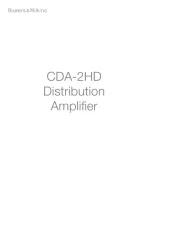
18 September 2025
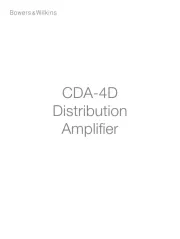
16 September 2025
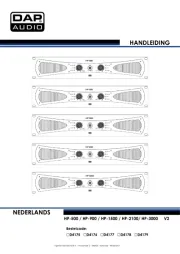
16 September 2025

16 September 2025
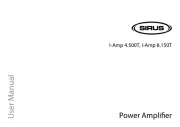
10 September 2025

8 September 2025

8 September 2025

8 September 2025
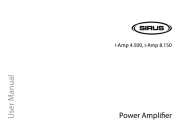
8 September 2025

8 September 2025
